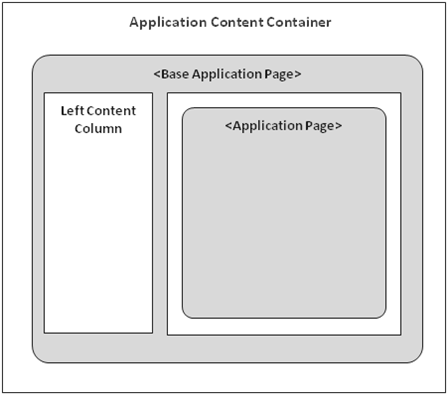Authenticated pages display options and information about applications.
A consumer registration page is an authenticated page, and is a separate application type. However, to access consumer registration pages, you need have only a standard access role that is granted to all users upon entry to the login page. Consumer registration pages have the same structure as other application pages, without a specific authenticated user Web session.
The hierarchy of an authenticated page replicates how all Wicket pages are formed.
Structure of Authenticated Page


The base page for all Wicket Web UI applications is defined by the
MobiliserBasePage class. The
BaseApplicationPage class extends
MobiliserBasePage and provides:
- Standard header area, which displays application graphics, the application name, and optionally, the logged-on user's information, such as a name. It also contains a logout link and a standard language selector.
- Top navigations menu, which includes global navigation items for all applications. The items shown to users are application specific, and based on users’ roles.
- Container for the main application page content.
- Standard authenticated footer that includes session timeout information.
The classes that define authenticated application pages extend
BaseApplicationPage, and set the basic structure for the
application-specific content:
- BaseConsumerPage – application content structure for both consumer registration and the Consumer Portal.
- BaseDistributorPage – application content structure for the Partner Portal.
- BaseCstPage – application content for the Administration Portal.
- BaseDashboardPage – base content for the Operations Dashboard Web application.
Application pages allow you to apply specific layouts to their innermost pages:
- An area on the left side of the page (left content column) displays page-context specific information and menus.
- The right side of the page displays the application page content.
Note: Typically, Web applications have maintained the concept of a left content
column, which is enforced by application-specific pages. If you write a new
application that does not require this layout, the
BaseApplicationPage class need not enforce this design. The
hierarchy of Wicket applications allows application pages to define their own
content layout within the application content container.
Structure of Page with Application Content Container

